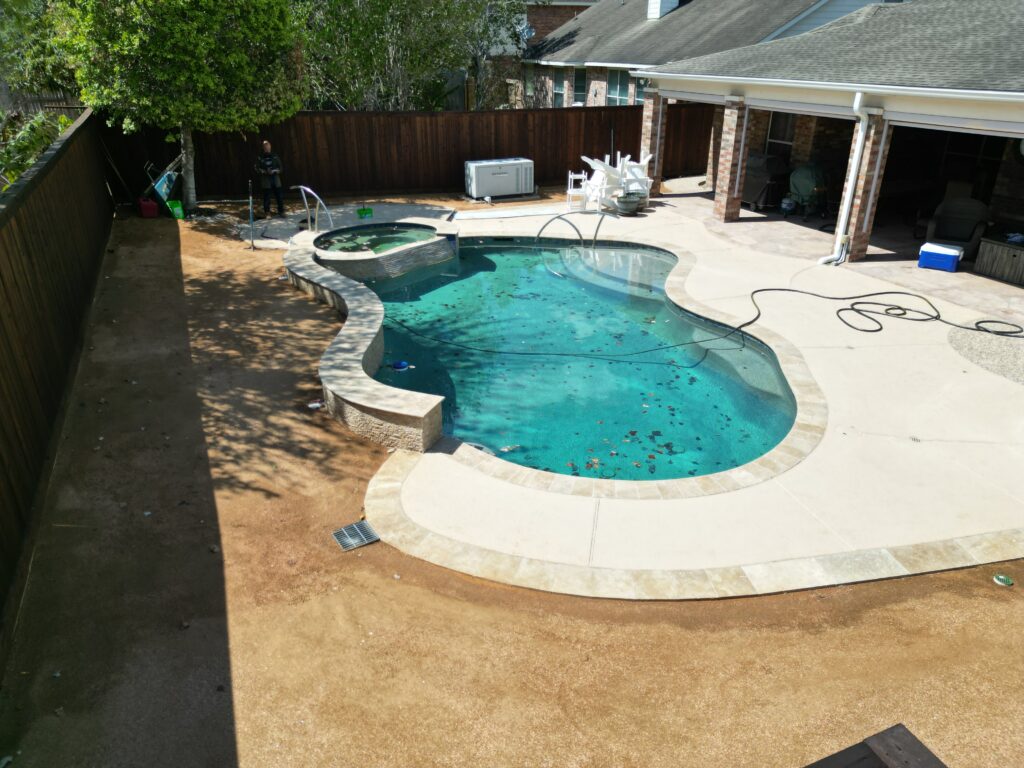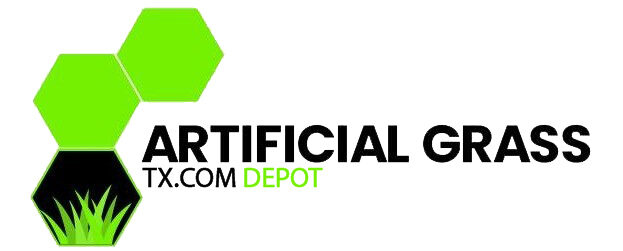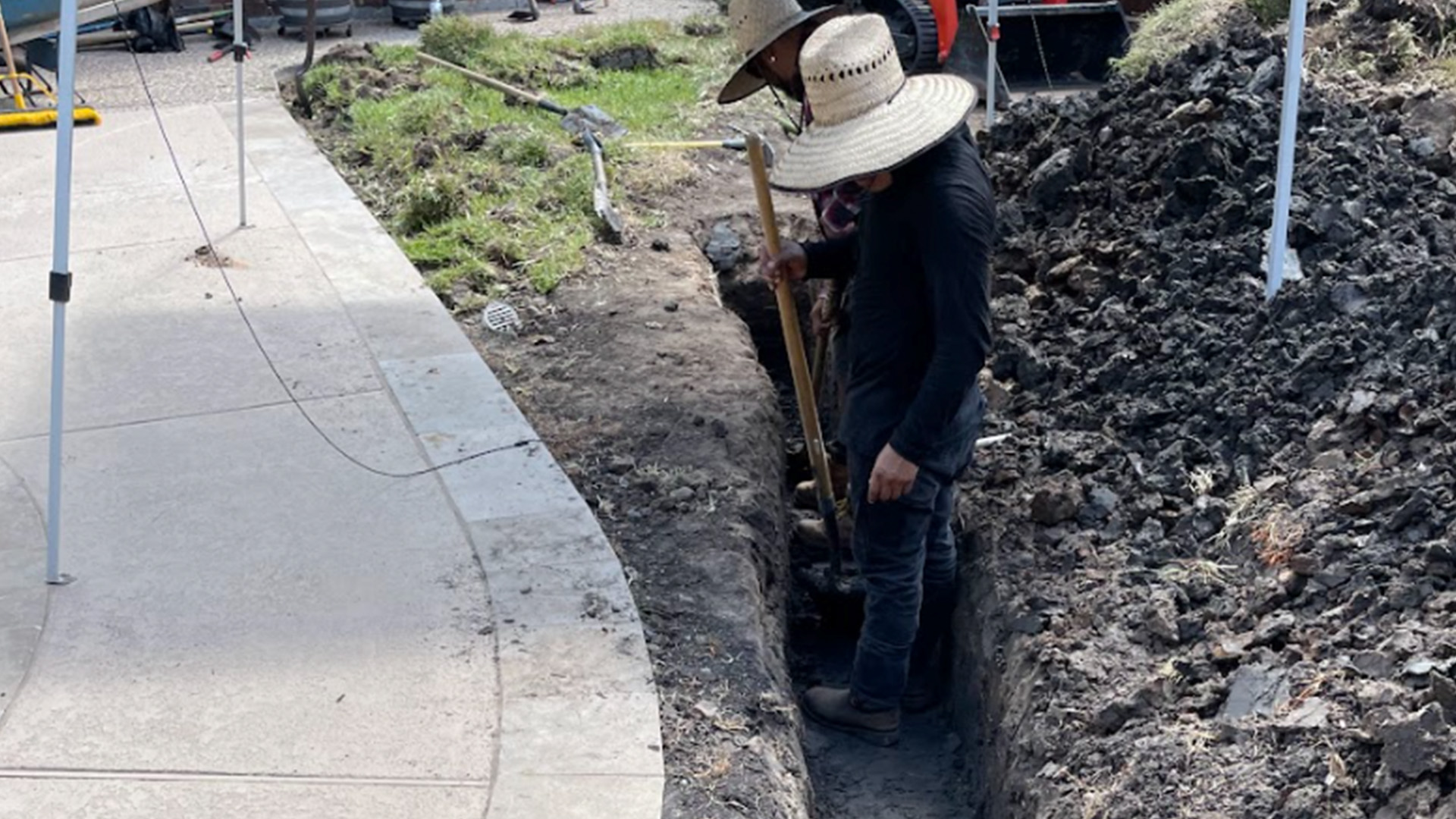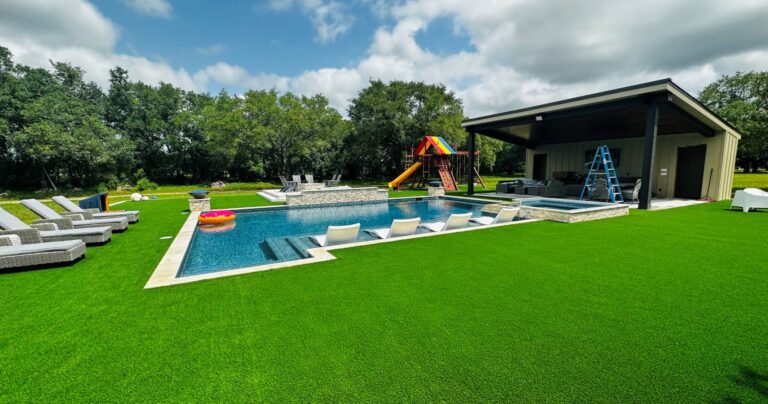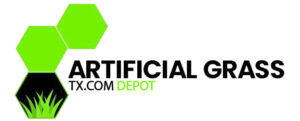Are you tired of dealing with water build-up and a soggy lawn?
If so, it’s time to consider installing a French drain under your artificial turf to avoid soggy lawn. With this ultimate guide, you can say goodbye to the frustration of waterlogged lawns and hello to a beautiful, functional space that stays dry year-round.
A French drain is a proven solution for tackling excess water in your yard. In fact, by redirecting surface and groundwater away from your turf, it prevents water from pooling and causing damage. Installing one beneath your artificial turf will ensure a well-drained and healthy lawn.
In this comprehensive guide, we will walk you through the step-by-step process of installing a French drain beneath your artificial turf. From selecting the right materials and tools to preparing the site and installing the drain, we’ve got you covered. We will also provide tips and tricks to optimize the performance of your drain and ensure longevity.
Therefore, say goodbye to water build-up and hello to a beautiful, functional lawn with our ultimate guide to installing a French drain under artificial turf. Get ready to transform your outdoor space!
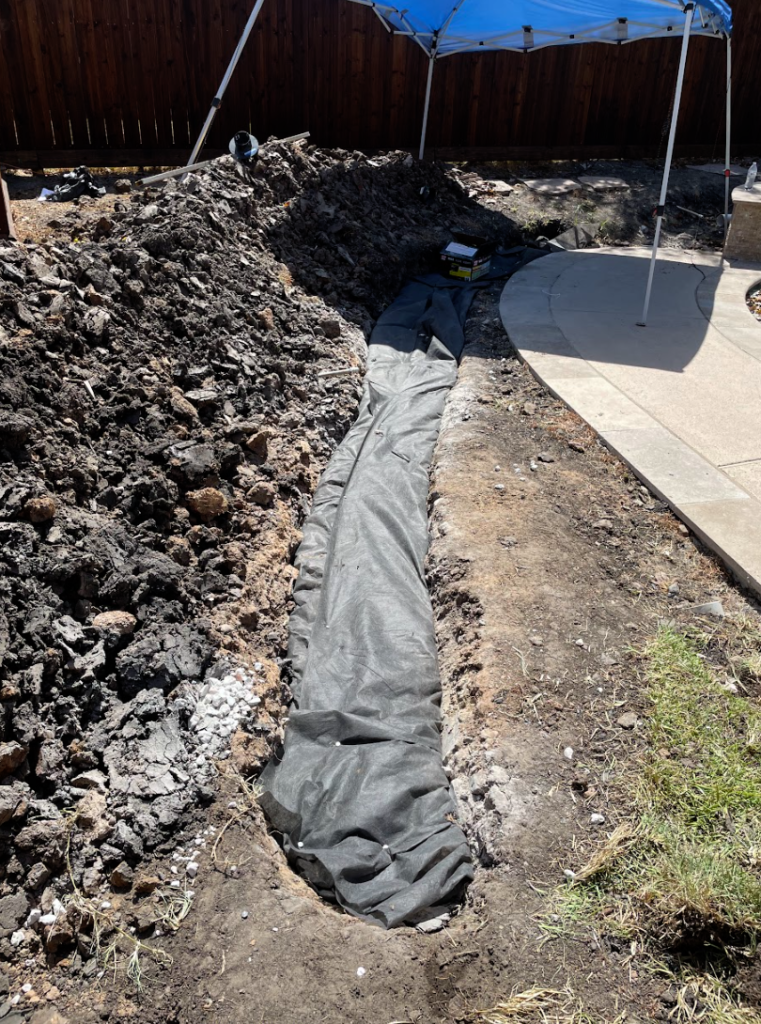
Understanding the Need for Proper Drainage Under Artificial Turf
Artificial turf has gained popularity due to its low maintenance and aesthetic appeal. However, one common issue that many homeowners face is water build-up, which can lead to a host of problems such as mold, mildew, and damage to the turf itself. Therefore, to ensure the longevity of your artificial turf and create a healthy environment, proper drainage is crucial.
A French drain is an effective solution for tackling excess water in your yard. It is a trench filled with gravel or rock, containing a perforated pipe that redirects water away from your turf. Furthermore, this drainage system allows water to flow freely, preventing any pooling or waterlogged areas. By installing a French drain beneath your artificial turf, you can ensure a well-drained and healthy lawn.
What is a French Drain and How Does It Work?
A French drain, also known as a weeping tile or sub-surface drain, is a simple yet efficient drainage system. It consists of a trench filled with gravel or rock, with a perforated pipe placed at the bottom. The pipe is covered with more gravel or rock, and the trench is then covered with soil or turf.
The concept behind a French drain is straightforward. When water encounters the trench, it is collected by the gravel or rock and directed towards the perforated pipe. The pipe then carries the water away from the area, ensuring that it doesn’t accumulate and cause damage. This system effectively prevents water build-up, making it an excellent choice for installing under artificial turf.
Benefits of Installing a French Drain Under Artificial Turf
There are several benefits to installing a French drain under your artificial turf. Let’s take a look at some of the key advantages:
- Prevents Water Build-Up: The primary function of a French drain is to redirect water away from your turf, preventing pooling and waterlogged areas. This ensures that your artificial lawn stays dry and functional, even during heavy rainfall.
- Protects Your Turf: Excess water can damage artificial turf, causing it to become discolored, moldy, or even rot. By installing a French drain, you can protect your investment and extend the lifespan of your artificial lawn.
- Improves Drainage: Proper drainage is essential for maintaining a healthy lawn. Moreover, french drain effectively removes excess water, allowing your turf to breathe and preventing issues like root rot and soil erosion.
- Reduces Maintenance: With a French drain in place, you’ll spend less time dealing with waterlogged lawns and more time enjoying your outdoor space. In addition, the improved drainage will minimize the need for constant maintenance and repairs.
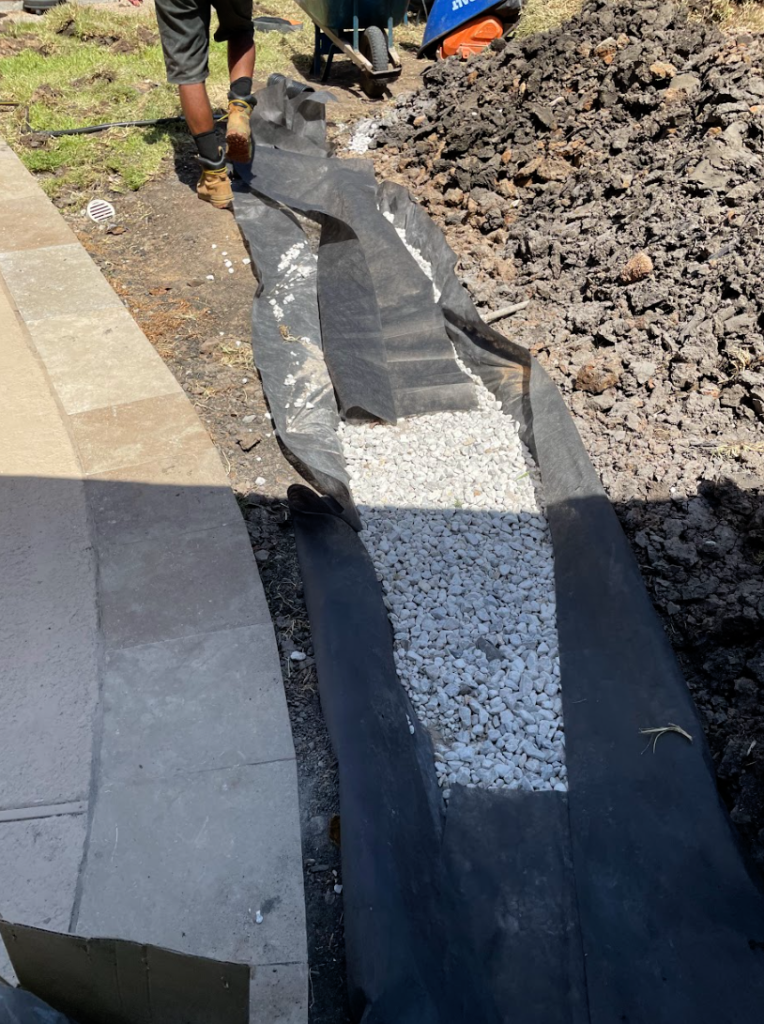
Factors to Consider Before Installing a French Drain
Before you begin the installation process, there are a few factors to consider to ensure the success of your French drain system. These include:
- Soil Type: The type of soil in your yard can impact the effectiveness of your French drain. Clay soils, for example, tend to retain water, requiring additional measures to improve drainage.
- Slope and Grading: The slope of your yard plays a crucial role in determining the direction of water flow. Ensure that your yard has adequate slope and proper grading to allow water to naturally drain away from your turf.
- Water Source: Identify the source of excess water in your yard. This could be due to heavy rainfall, poor irrigation, or even a high water table. Understanding the source will help you design the most effective French drain system.
- Permit Requirements: Depending on your location, you may need to obtain permits before installing a French drain. Check with your local authorities to ensure you comply with any regulations or restrictions in your area.
By considering these factors, you can tailor your French drain installation to suit the specific needs of your yard and create an efficient drainage system.
Step by Step Guide to Installing a French Drain Under Artificial Turf
Now that you understand the importance of proper drainage and have considered the necessary factors, let’s dive into the step-by-step process of installing a French drain under your artificial turf:
- Gather the Required Materials and Tools: Before you begin the installation, gather all the necessary materials and tools. This may include a shovel, wheelbarrow, perforated pipe, gravel or rock, geotextile fabric, and turf adhesive.
- Prepare the Site: Start by marking the area where you plan to install the French drain. Remove any existing turf or vegetation, ensuring that the area is clear and level. Use a shovel to excavate a trench that is approximately 12-18 inches deep and wide enough to accommodate the pipe and gravel.
- Add the Gravel Base: Once the trench is excavated, add a layer of gravel or rock to the bottom. This will serve as the foundation for your French drain. Ensure that the gravel is evenly spread and compacted to provide stability.
- Install the Perforated Pipe: Place the perforated pipe on top of the gravel, ensuring that it sits in the center of the trench. Connect the pipe to a drain outlet or a suitable drainage point. If necessary, use connectors or fittings to join multiple sections of pipe.
- Cover the Pipe with Gravel: Once the pipe is in place, cover it with more gravel or rock. This will help filter the water and prevent debris from clogging the pipe. Ensure that the pipe is completely covered with gravel, leaving no gaps or exposed areas.
- Lay Geotextile Fabric: To prevent soil from seeping into the gravel and clogging the drain, lay a layer of geotextile fabric over the gravel. This fabric allows water to pass through while keeping the soil out, ensuring the longevity and effectiveness of your French drain.
Next steps after the French drain system is in place
- Replace the Turf: With the French drain system in place, you can now replace the artificial turf. Ensure that the turf is properly aligned and secured, using turf adhesive or other recommended methods.
- Test the Drainage: Once the turf is installed, it’s essential to test the drainage system to ensure its effectiveness. Run water through the drain and observe how quickly it drains away. Make any necessary adjustments or improvements to optimize the drainage.
By following these step-by-step instructions, you can successfully install a French drain under your artificial turf and enjoy a well-drained and functional lawn.
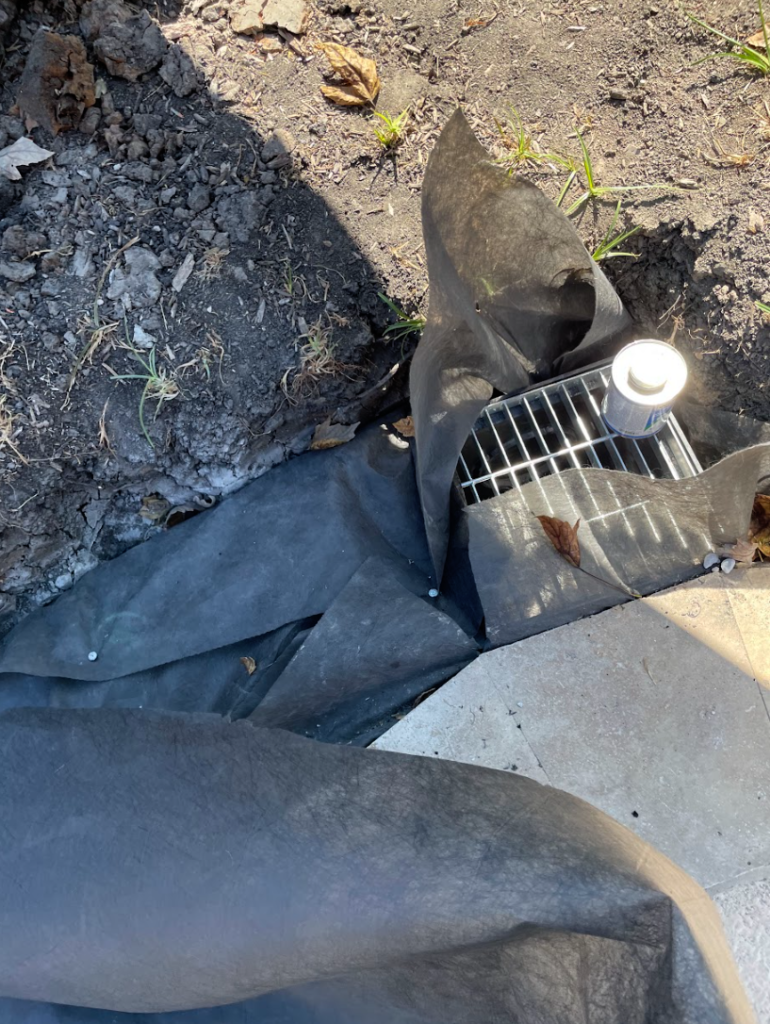
Maintaining and Troubleshooting Your French Drain System
Like any other drainage system, a French drain requires regular maintenance to ensure optimal performance. Here are some tips to help you maintain and troubleshoot yours:
- Regularly inspect the drain for any signs of clogging, such as slow drainage or water pooling. If you notice any issues, clean the drain by removing any debris or sediment that may have accumulated.
- Check the geotextile fabric periodically to ensure that it is not clogged with soil or roots. If necessary, remove the fabric, clean it, and reinstall it to maintain proper filtration.
- Monitor the condition of the pipe and the gravel surrounding it. If you notice any damage or deterioration, repair or replace the affected sections promptly to prevent further issues.
- Consider installing a drain cover or grate to prevent leaves, twigs, or other debris from entering the French drain system. This will minimize the risk of clogging and extend the lifespan of your drainage system.
- If you encounter persistent drainage problems or issues that you cannot resolve, it may be necessary to consult a professional for further assistance. They can assess the situation and provide expert advice to ensure the proper functioning of your French drain under artificial grass.
By implementing these maintenance practices and addressing any troubleshooting needs promptly, you can maximize the longevity and effectiveness of your system.
Frequently Asked Questions About Installing a French Drain Under Artificial Turf
1. Can I install a French drain under any type of artificial turf?
Yes, a French drain can be install under any type of artificial turf. It provides effective drainage regardless of the turf material or installation method.
2. How deep should the French drain be installed?
The depth of the French drain depends on various factors, including soil type and water source. Typically, a depth of 12-18 inches is recommended to ensure proper drainage.
3. Can I install it myself, or do I need to hire a professional?
Installing a French drain can be a DIY project if you have the necessary tools and skills. However, if you are unsure or if the project is complex, it is advisable to hire a professional to ensure proper installation.
4. How long does a French drain last?
With proper maintenance, a French drain can last for several decades. Regular inspection and cleaning will help maintain its effectiveness and longevity.
5. Can a French drain be installed in an existing artificial turf lawn?
Yes, it is possible to install a French drain in an existing artificial turf lawn. However, this may require removing and reinstalling sections of the turf to accommodate the drainage system.
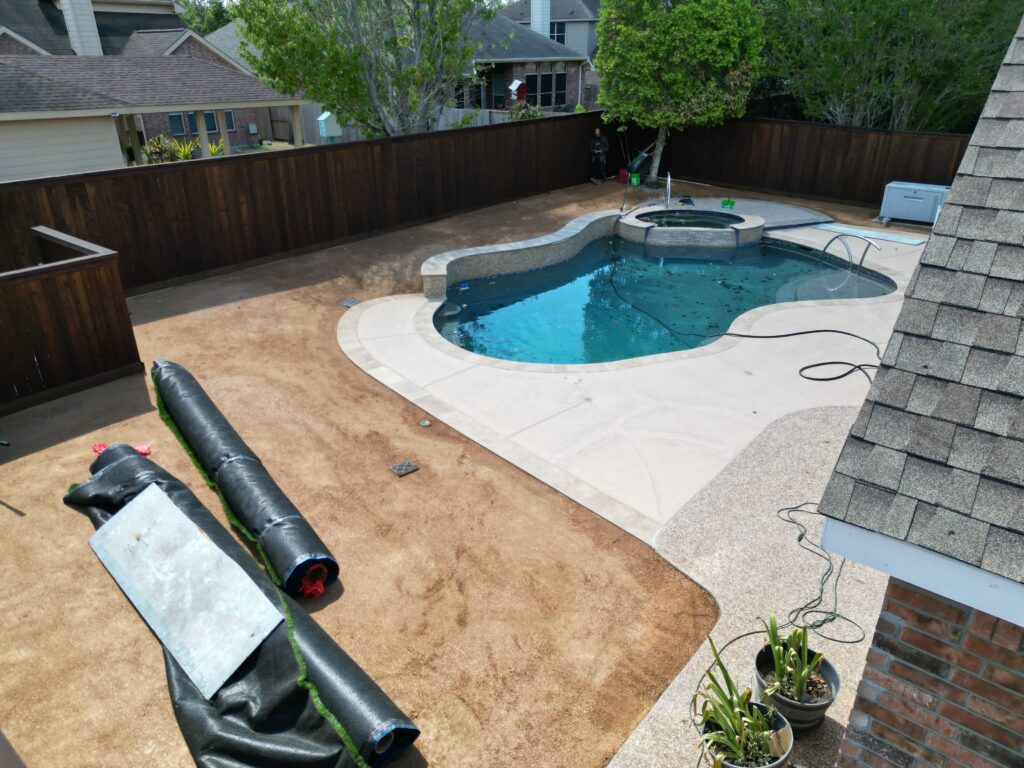
Hiring a Professional or DIY: Pros and Cons
Deciding whether to hire a professional or tackle the French drain installation yourself depends on various factors. Here are some pros and cons to consider:
Hiring a Professional:
Pros:
- Expertise and experience in proper installation.
- Saves time and effort.
- Access to specialized tools and equipment.
- Ensures compliance with local regulations and permits.
Cons:
- Additional cost compared to a DIY installation.
- Reliance on the availability and schedule of the professional.
DIY Installation:
Pros:
- Cost-effective option, especially for smaller projects.
- Flexibility to work at your own pace.
- Personal satisfaction and learning experience.
Cons:
- Requires time, effort, and research.
- Potential for mistakes or improper installation.
- Limited access to professional tools and equipment.
Consider your budget, timeline, and comfort level with DIY projects before making a decision. If you are unsure or have a complex project, it’s best to consult a professional to ensure the successful installation of your French drain system under artificial grass.
Conclusion: Enjoy a Beautiful, Functional Lawn with a French Drain Under Your Artificial Grass
Installing a French drain under your artificial grass is a smart investment that can transform your outdoor space. Therefore, by preventing water build-up and ensuring proper drainage, you can enjoy a beautiful, functional lawn year-round, free from the frustrations of waterlogged lawns.
With this ultimate guide, you now have all the information you need to successfully install a French drain under your artificial turf. From understanding the importance of proper drainage to step-by-step instructions and maintenance tips, you can confidently create a well-drained and healthy environment for your artificial lawn.
To sum up, say goodbye to water build-up and hello to a beautiful, functional lawn with a French drain under your artificial turf. Finally, get ready to transform your outdoor space and enjoy the benefits of a well-drained and visually appealing lawn! Meanwhile, learn more with our services.
